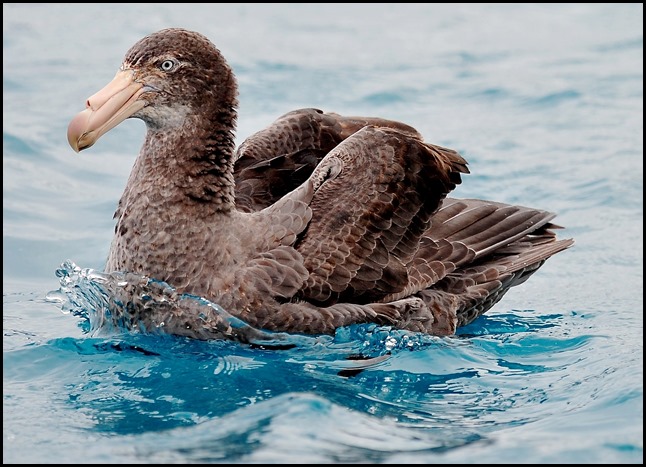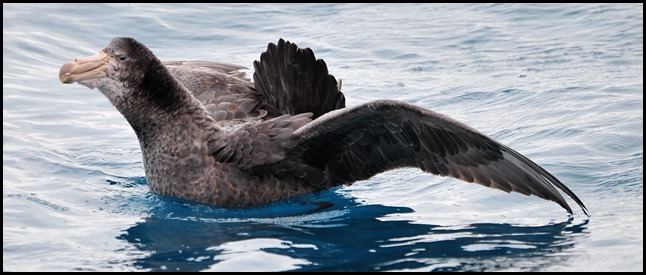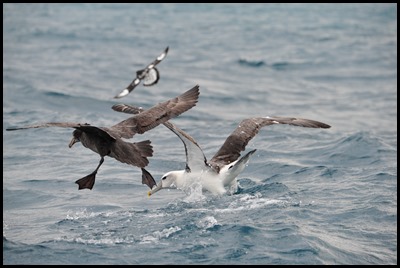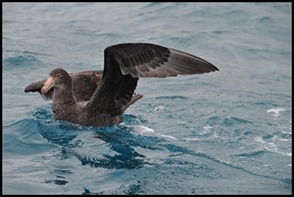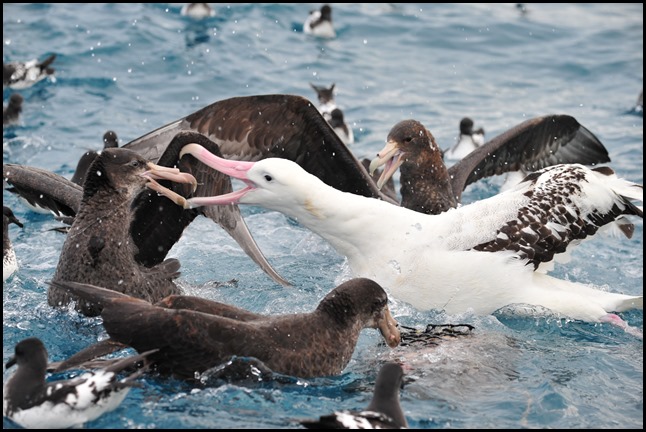Petrels

|
The Petrels We
Met
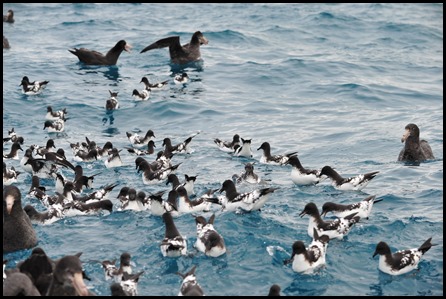 Today, within a minute of Gary
switching off the engine, we had a load of little
chaps with us, and, other than the albatrosses, there were several very big, brown chaps, new to us.
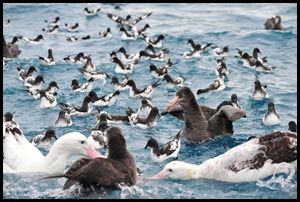 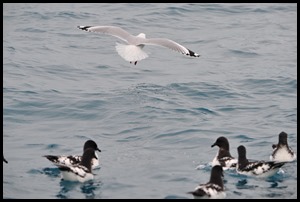 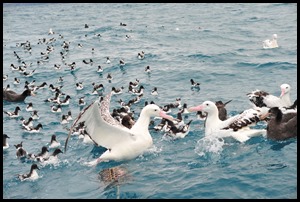 The little ones were quite patient, waiting for the scraps that drifted out from the
bigger ones shaking of the food bag. They didn’t get
huffy when someone landed – just made a path for them. When the bigger
ones squabbled they tended to look the other way.
The Cape petrel is a
unique looking petrel. It has a black head and neck, and a white belly, breast,
and its underwing is white with a black border. Its back, and upperwings are
black and white speckled, as is its tail which also has a band of black. When
fully grown, their wings span 34 inches and they are 15 inches
tall.
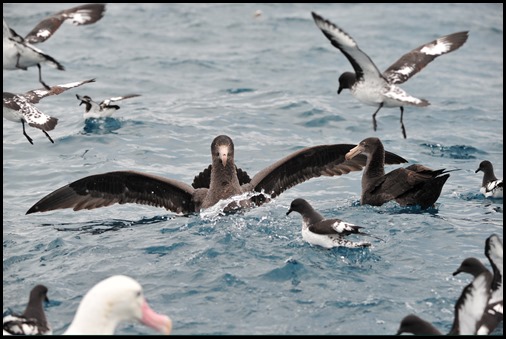 They did
scatter when things looked dodgy.
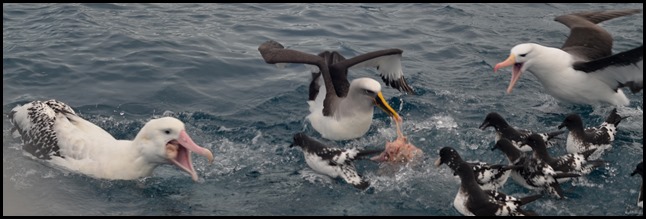 But got stuck
in, when they could.
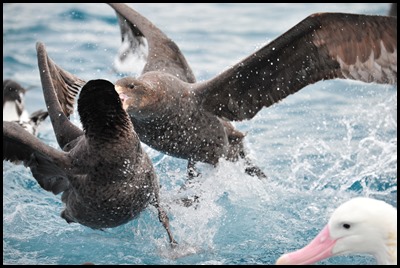 
Meanwhile, the big chaps squabbled and posed.
This chap looked as big as an albatross.
The southern giant petrel is slightly larger than the northern giant petrel, at 6.6–17.6 pounds, 71–83 inches across the wings and 34–39 inches tall. By comparison, the northern giant petrel is 6.6–11.0 pounds, 59–83 inches across the wings and 31–37 inches. They superficially resemble the albatross, and are the only procellarids who can equal them in size. They can be separated from the albatrosses by their bill; the two tube nostrils are joined together on the top of the bill, unlike on albatross where they are separated and on the side of the bill. They are also the only members of the Procellariidae family to have strong legs to walk on land. They are also much darker and more mottled brown (except for the white morph southern, which are whiter than any albatross) and have a more hunch-backed look. The bills of Procellariiformes are also unique in that they are split into between seven and nine horny plates. The petrels have a hooked bill called the maxillary unguis which can hold slippery food. They produce a stomach oil made up of wax esters and triglycerides which is stored in the proventriculus. This can be sprayed out of their mouths as a defence against predators and as an energy rich food source for chicks and for the adults during their long flights. Finally, they have a salt gland that is situated above the nasal passage and helps desalinate their bodies, due to the high amount of ocean water that they imbibe. It excretes a high saline solution from their nose. Pretty, one lady described them as looking like a shady casino owner. Nonetheless, a new one on us.
ALL IN ALL SMALL AND BIG THE SMALL QUITE SWEET, THE BIG LOOKING QUITE GRUMPY |
